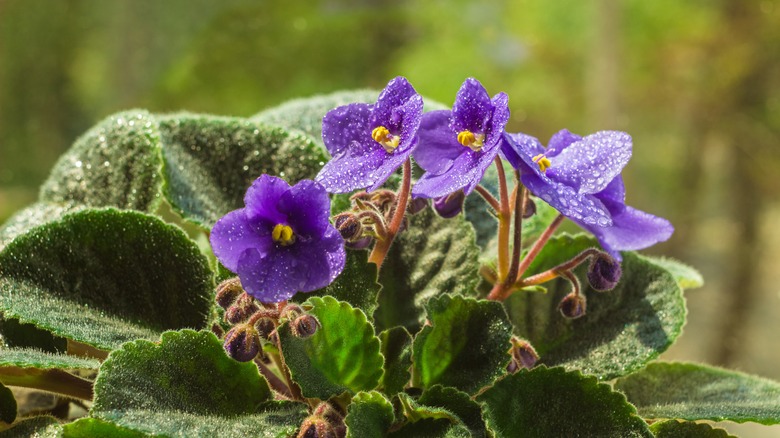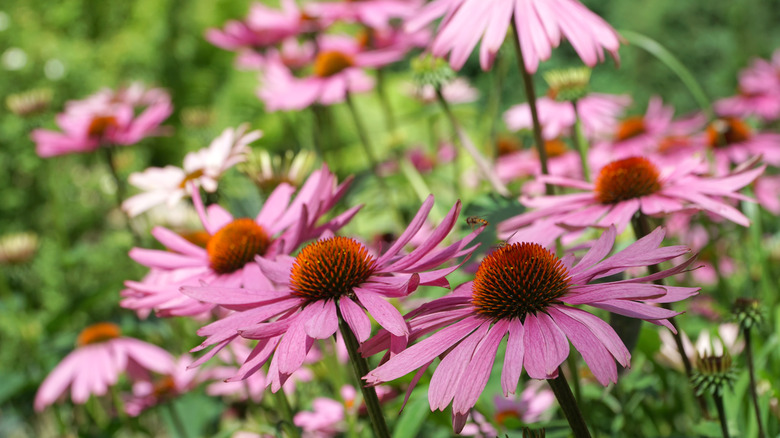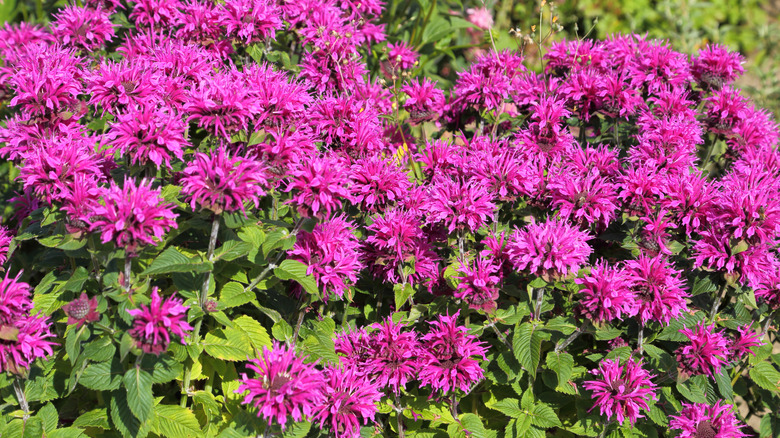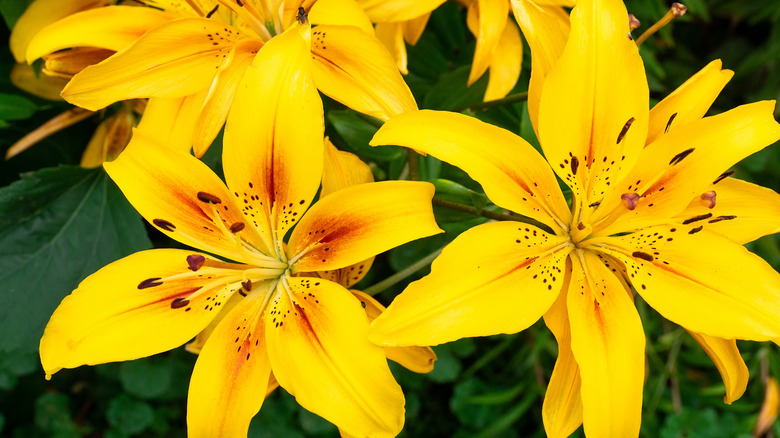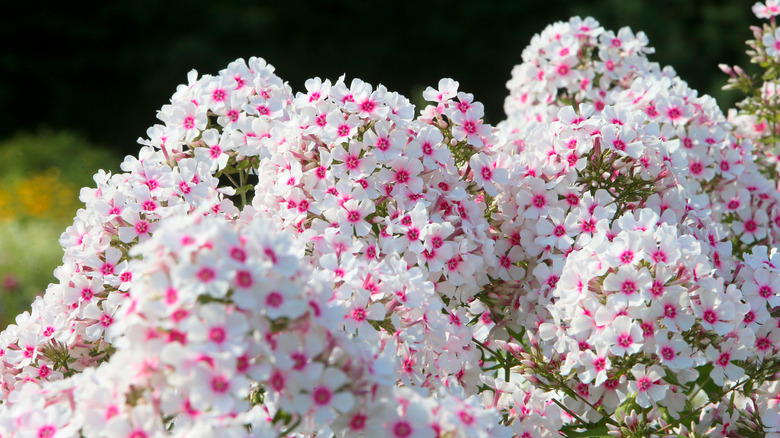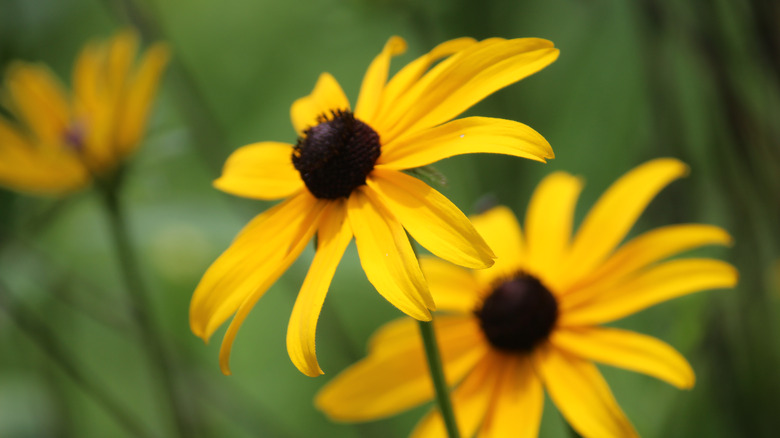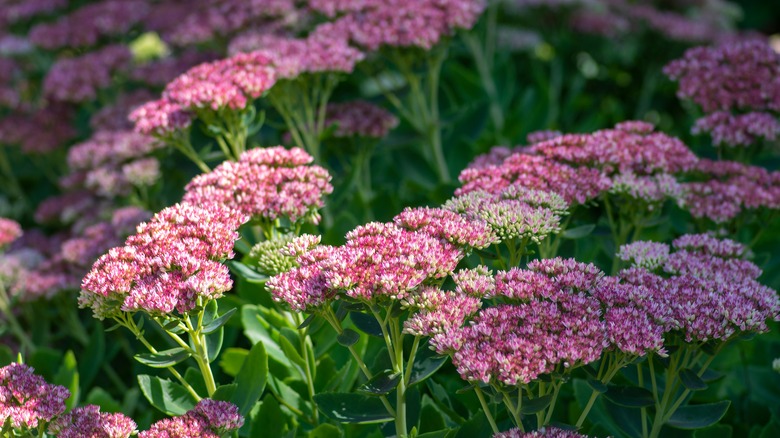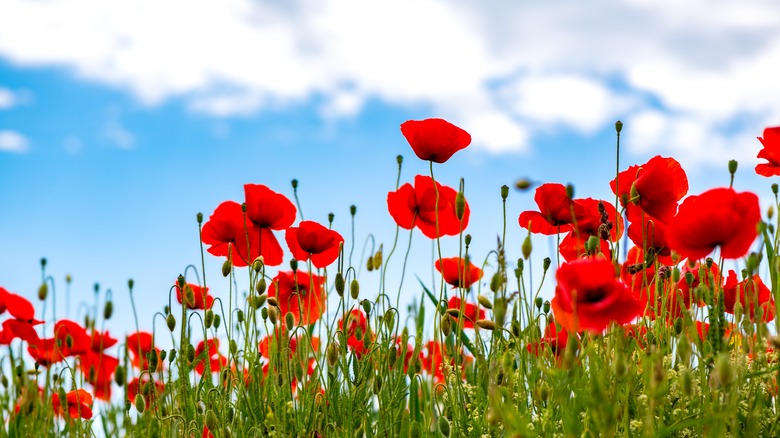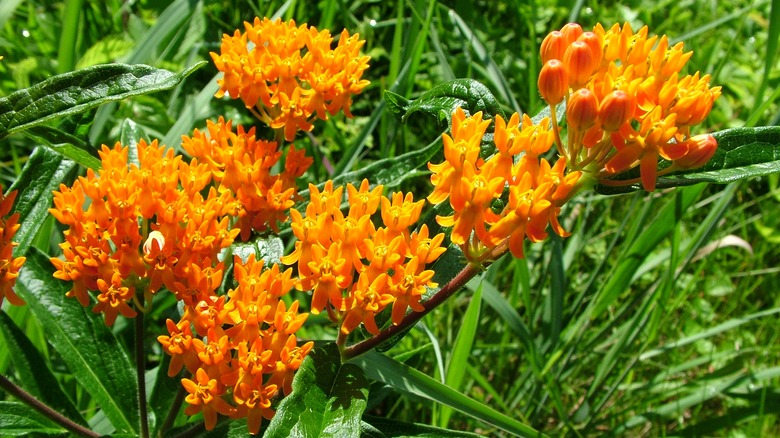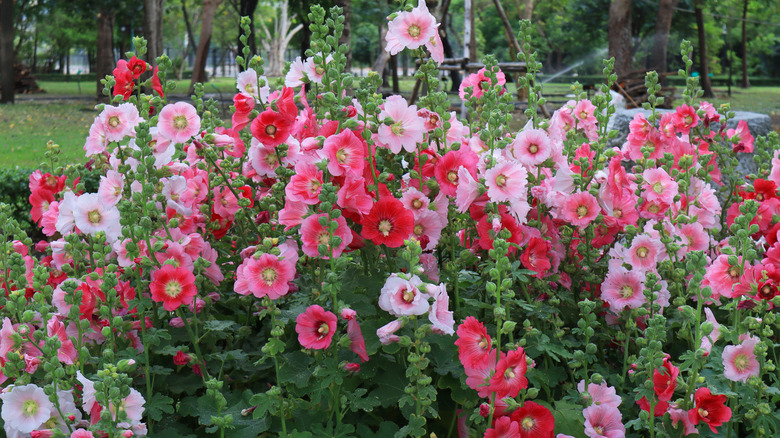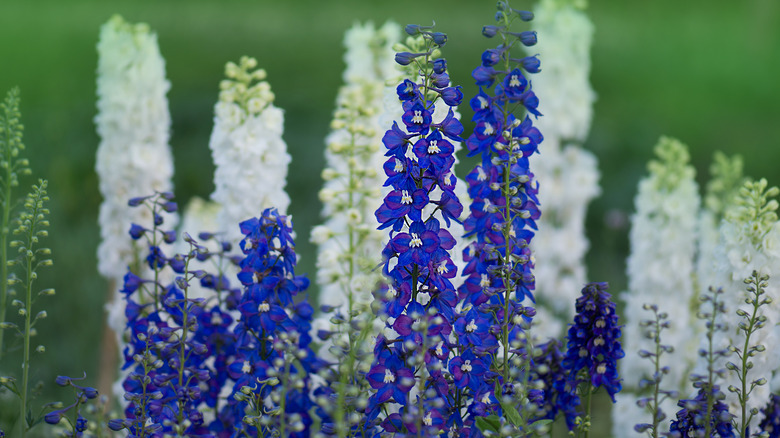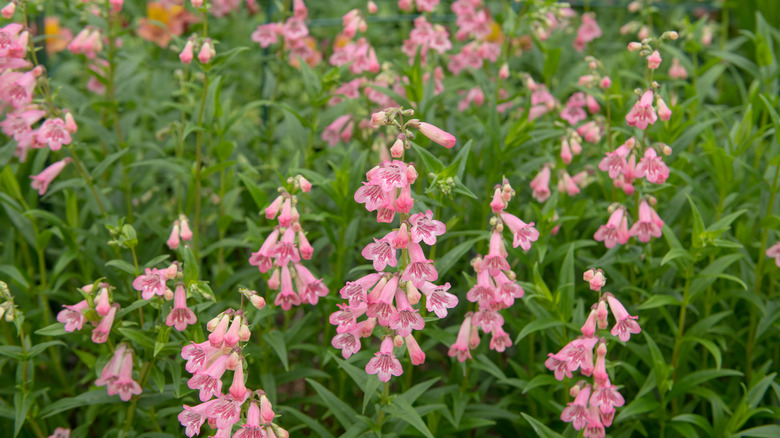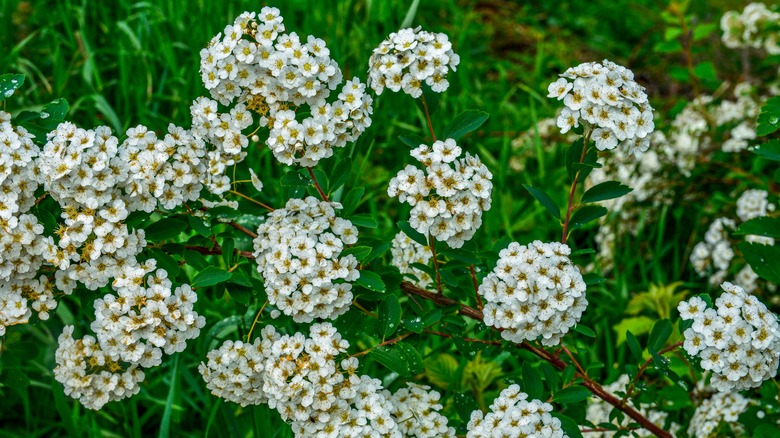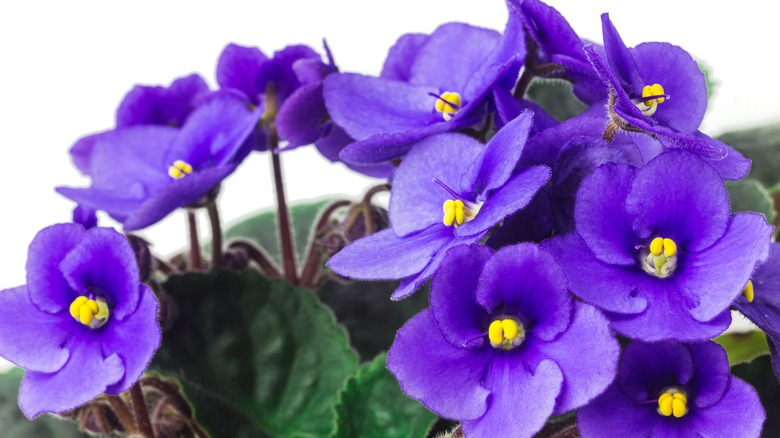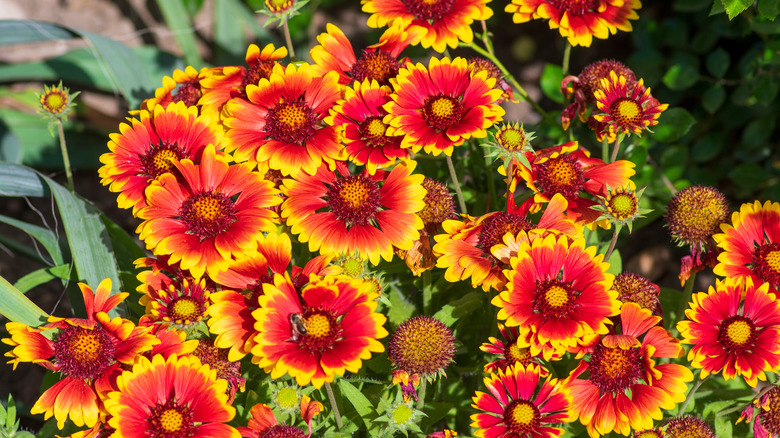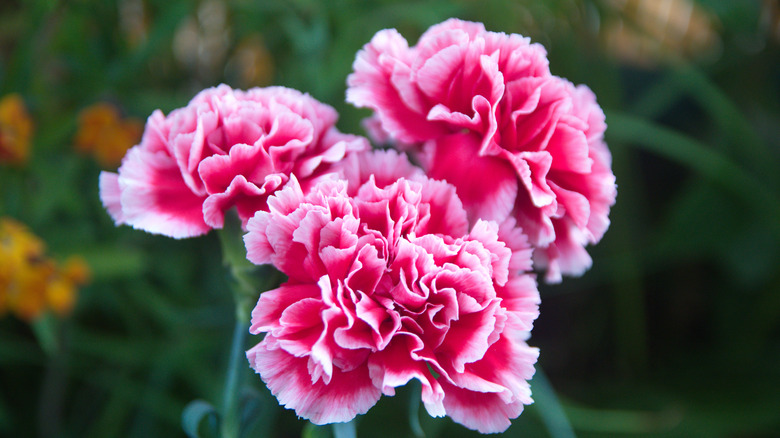15 Best Plants To Grow In USDA Zone 5
When it comes to planting a garden, there are a plethora of plants, flowers, and trees to choose from, but they may not all grow where you live. The U.S. and Canada have 13 zones across the countries that determine the state of the climate that will help determine how well plants will grow in them. According to CNET, the areas that are labeled on the hardiness zone map fall under the U.S. Department of Agriculture or USDA. Zone 1 is the coldest, and zone 13 is the hottest; each zone has a 10-degree Fahrenheit difference, making it warmer or colder.
You can figure out which zone you're in by looking at the hardiness zone map, courtesy of the Library of Congress, to give you a better idea of the climate. It'll help you choose which plants to grow in your garden. When you go to local floral shops or nurseries, the plants you buy also label the zones they should be grown in, per CNET. It's easier to plant cultivars that work well with your zone so that you don't waste time trying to grow a plant that doesn't have the right weather. Here are a few plants you can grow if you live in USDA zone 5.
1. Coneflowers
Add a pop of color to your garden with coneflowers (Echinacea), which look exactly like what they're called; flowers with droopy petals and a spiky seed on top of them. They come in various colors, such as blue, pink, white, yellow, purple, and orange, so you'll have various choices. According to American Meadows, coneflowers can grow up to 4 feet tall in full to partial sun. They grow during the spring of their second year in poor, rocky soil in USDA zones 5 to 8 and are low maintenance when it comes to water; they're also extremely drought tolerant.
2. Bee balm
If you want fireworks all year round, plant some bee balm flowers (Monarda) in your garden. Bee balms grow on long stems with a small center where wilted petals explode from. They come in red, purple, pink, and white and grow up to 4 feet tall, so you can place them anywhere outside or inside your home. You can cultivate in well-drained soil with a pH of 6 to 6.7 in full sunlight and water only to keep the soil moist, per Bonnie Plants. They're perfect zone 3 to 9 plants with a blooming season in the summer.
3. Daylilies
Daylilies (Hemerocallis) are tough plants that thrive on their own with little attention. They grow on long stalks with ruffled petals that resemble a trumpet; they come in orange, pink, purple, yellow, red, white, and bicolors via Longfield Gardens. Daylilies grow to about 6 feet tall; you should plant them in an area where they'll receive at least six hours of sunlight and keep them in moist soil. Use mulch to retain the moisture longer. They bloom great in the summer in USDA zones 4 to 9.
4. Phlox
Incorporating colorful patches of flowers in your yard with phlox (Phlox paniculata) will make you feel like you're in a botanical garden. These plants grow as short or tall shrubs with pink, purple, red, and white flowers with different colored pistils. Blooming beautifully in the summer in USDA zones 4 to 8, they need partial to full sunlight with well-draining soil, claims Easy to Grow Bulbs. So when you first plant them, you want to water them every day or every other day. They can grow up to 4 feet, the University of Minnesota Extension notes.
5. Black-eyed Susan
Black-eyed Susans (Rudbeckia) look similar to daisies, except they're bigger with longer yellow, orange, and brown petals and a large black round pistil. They can also be mistaken for coneflowers since they have the same form but bloom in different colors. Black-eyed Susans do well in the fall before the first frost in USDA zones 3 to 9 and need six to eight hours of sunlight when they're planted in well-draining, moist soil (via All About Gardening). They'll grow up to 40 inches with long green stems, which make a perfect flower arrangement for your dining table.
6. Stonecrop
If you enjoy having succulents around your home, you can try growing stonecrop (Sedum). They grow as large bushes or shrubs, where some have gorgeous foliage in various colors such as purple, pink, red, yellow, and green. There are a variety of stonecrops to choose from, each coming with different watering needs that will be on the label. According to Plant Delights Nursery, they need full to partial sunlight, and some can grow up to 3 feet tall in well-draining soil. They also bloom the best during summer through fall in USDA zones 4 to 9, per SFGate.
7. Poppies
Poppies (Papaver) are some of the most delicate but stunning flowers with their bright red foliage and thin green stems. However, they do come in other colors such as orange, yellow, pink, black, and purple. Their blooming season is early spring to summer, and they do well in zones 3 to 10, growing up to 4 feet, Plants Spark Joy notes. Poppies require full to partial sunlight throughout their growing period in moist, well-draining soil, states Gardeningetc. Since there are a variety of poppies to grow, read their labels to know how often to water them.
8. Butterfly weed
Butterfly weed plants (Asclepias tuberosa) are stunning green shrubs with flower bunches that come in numerous colors. Butterfly weeds can grow up to 4 feet tall and appear in the late summer and early fall (via Gardening with Charlie Nardozzi). They'll bloom flowers in pink, orange, yellow, and red in USDA zones 3 to 9, per Proven Winners. You should plant them in well-draining soil and saturate them with lots of sunlight. Throughout the first year, water them regularly to keep the soil moist.
9. Hollyhock
Hollyhock plants (Alcea) are beautiful long vines covered with multiple flowers in white, red, purple, black, and yellow. You can grow them along your fence or in front of a window in your yard. They make the best accent flowers in your garden, peeking through any tall hedges or shrubs you may have flowering in the summer in USDA zones 3 to 8. You should plant them in fertile soil that's kept moist throughout until they grow; they're drought-tolerant, according to Flower Patch Farmhouse. They enjoy full to partial sunlight and can grow up to 10 feet tall.
10. Larkspur
Larkspur (Delphinium) is possibly one of the most gorgeous flowers you can grow in your garden. They are rocket-shaped and made up of thick blooms that come in violet, white, lavender, blue, and pink and definitely deserve their own space in your garden, either in the corner or center. They can grow up to 6 feet tall in full sun with fertile, rich soil kept moist throughout the summer, claims Sarah Raven. You can start growing them in the spring, so they're fully bloomed by fall in USDA zones 2 to 10.
11. Beardtongue
Beardtongue flowers (Penstemon digitalis) can be a great addition to your garden; they grow into tall shrubs with gorgeous foliage that will grab everyone's attention. The beautiful two-lipped flower comes in an array of colors such as pink, purple, blue, white, and red. They bloom in late spring in zones 3 to 8; you should plant them in rocky or sandy, fast-draining soil, states Gardenista, with full direct sunlight on them at all hours. Also, beardtongues want the best gravel covering them instead of mulch in order to keep their moisture and grow tall up to 3 feet.
12. Meadowsweet
Meadowsweet (Filipendula) is a plant that looks great in gardens but also has multiple benefits: It contains salicylic acid, an anti-inflammatory people use for the skin, according to Siskiyou Seeds. Have your own skincare remedy in your backyard! They grow as bushes with white, sometimes pink, foliage in bunches throughout, blooming in the summer through fall in zones 3 to 8, per Pond Informer. When you plant them, place them in heavy clay soils and kept them moist with 1 inch of water weekly. They enjoy full to partial sunlight and grow up to 3 feet tall.
13. Violets
A popular flower often found in zone 5 is the violet (Viola) which is purple in color when it blooms on large green shrubs. They also come in other colors such as pink, white, blue, and yellow, but they're mostly violet. They bloom from spring to fall and give your backyard a great pop of color. You can plant violets in almost any soil and will grow in full sun to partial shade in zones 3 to 8, states Gardeners Net. Water the flowers when their soil is dry; they can grow between 4 to 10 inches tall.
14. Great blanket flowers
This sunflower with a twist, the great blanket flower (Gaillardia), can spruce up your home inside and out with its bicolor petals. It's perfect for growing during the summer, brightening up your garden with its yellow-orange petals. You can grow them in patches or start them inside in pots, then move outside. You should plant gaillardias in well-draining soil with full direct sunlight and at least 1 inch of water weekly, Grow Veg states. They can grow up to 28 inches tall and bloom from midsummer to fall (per Nature & Garden) in zones 3 to 10.
15. Carnation
According to FTD by Design, carnations (Dianthus caryophyllus) are flowers typically given to moms on Mother's Day since they represent love and gratitude. Carnations bloom into large flowers on tall bushes in various colors such as pink, white, red, and purple; they can grow up to 24 inches tall in the spring. Carnations need well-draining, fertilized soil at a pH of 6.7 to 6.9 and should be placed where they'll receive up to six hours of sunlight for zones 4 to 8. If you grow them from seeds, water them two to three times a week.
